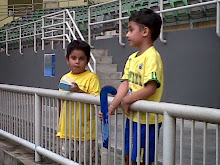By Mihir Vasavda
The first time Sardar Singh was told to drink black coffee half-an-hour before a match, he thought it was a joke. Minutes later, he realised David John, the Indian hockey team’s physio, was serious. Sardar drank the coffee reluctantly, but did not understand why he was being asked to do so.
Some matches later, he noticed a change in his teammates and him. They were running faster, their reflexes improved considerably and their energy levels were high. The training routine remained the same. It was then that Sardar understood why John insisted that the team drank black coffee.
It wasn’t easy for John and chief coach Michael Nobbs to convince a bunch of guys, who always gulped down glasses of lassi, to switch to black coffee. But it was necessary.
“Black coffee acts as a stimulant and energises you... you turn out for your matches in a better frame of mind. It’s a physiological fact. It used to be a banned substance (by the World Anti-Doping Agency) for that very reason. But it’s not anymore and so, an hour before a match, the team has to have black coffee. They can also have plain milk without sugar,” John told DNA.
The bitter drink alone is not the only reason why the team is among the fittest sides in the world.There has been a revolutionary change in the team’s training methods and a total overhaul of the diet.
Unlike other teams, which prefer a carbohydrate-laden meal, the Indian players have been advised to increase their protein intake. Rice and potato, which used to be the core ingredient of each meal, are out. “It’s challenging for the vegetarians in the side (there are eight). However, they are good with their protein shakes,” John said.
It wasn’t easy to convince the players. “Honestly, they didn’t a choice. After we won the first tournament (the Asian Champions Trophy in 2011) with this diet, they thought something’s going right. Maybe that’s why they adopted it. Had we lost, it would have been difficult to convince them. The win helped players realise the importance of diet,” said John, who has previously worked at the MRF pace academy in Chennai under Dennis Lillee.
Nobbs and John have also introduced the concept of ‘hockey fitness’. The Australian duo has designed a programme which sees players at each position carry out specific exercises that optimises their performance. The full-backs and goalkeepers undergo exercises that involve a lot of lunging and lateral movement while the forwards are made to run more side-to-side. The training session lasts a maximum of 90 minutes.
“In the past, they would run around athletic tracks and train more like field athletes. My fitness is developed through skills,” John said. “The results are visible. Our team can match any side fitness-wise. That gives a lot of confidence to the players and it translates on the field.”
DNA
The first time Sardar Singh was told to drink black coffee half-an-hour before a match, he thought it was a joke. Minutes later, he realised David John, the Indian hockey team’s physio, was serious. Sardar drank the coffee reluctantly, but did not understand why he was being asked to do so.
Some matches later, he noticed a change in his teammates and him. They were running faster, their reflexes improved considerably and their energy levels were high. The training routine remained the same. It was then that Sardar understood why John insisted that the team drank black coffee.
It wasn’t easy for John and chief coach Michael Nobbs to convince a bunch of guys, who always gulped down glasses of lassi, to switch to black coffee. But it was necessary.
“Black coffee acts as a stimulant and energises you... you turn out for your matches in a better frame of mind. It’s a physiological fact. It used to be a banned substance (by the World Anti-Doping Agency) for that very reason. But it’s not anymore and so, an hour before a match, the team has to have black coffee. They can also have plain milk without sugar,” John told DNA.
The bitter drink alone is not the only reason why the team is among the fittest sides in the world.There has been a revolutionary change in the team’s training methods and a total overhaul of the diet.
Unlike other teams, which prefer a carbohydrate-laden meal, the Indian players have been advised to increase their protein intake. Rice and potato, which used to be the core ingredient of each meal, are out. “It’s challenging for the vegetarians in the side (there are eight). However, they are good with their protein shakes,” John said.
It wasn’t easy to convince the players. “Honestly, they didn’t a choice. After we won the first tournament (the Asian Champions Trophy in 2011) with this diet, they thought something’s going right. Maybe that’s why they adopted it. Had we lost, it would have been difficult to convince them. The win helped players realise the importance of diet,” said John, who has previously worked at the MRF pace academy in Chennai under Dennis Lillee.
Nobbs and John have also introduced the concept of ‘hockey fitness’. The Australian duo has designed a programme which sees players at each position carry out specific exercises that optimises their performance. The full-backs and goalkeepers undergo exercises that involve a lot of lunging and lateral movement while the forwards are made to run more side-to-side. The training session lasts a maximum of 90 minutes.
“In the past, they would run around athletic tracks and train more like field athletes. My fitness is developed through skills,” John said. “The results are visible. Our team can match any side fitness-wise. That gives a lot of confidence to the players and it translates on the field.”
DNA





